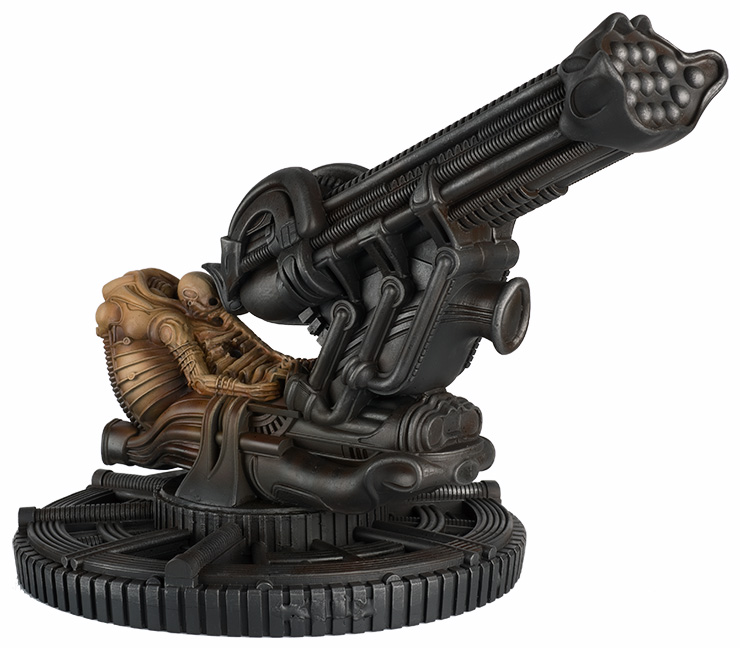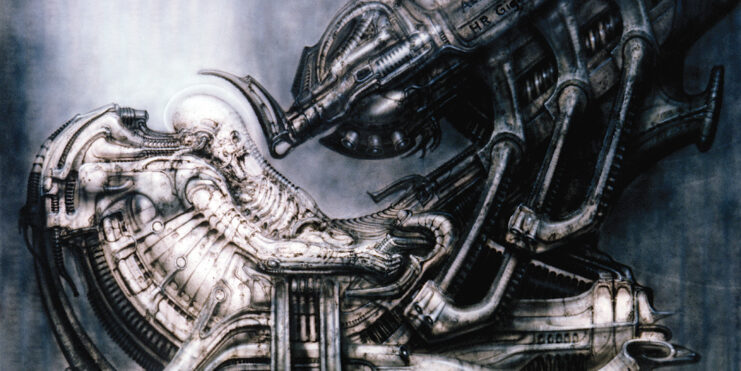Before the xenomorph, there was the ‘Space Jockey’. Slaughtered from the chest out and fossilized, this mysterious pilot was our introduction to the macabre environment of Alien. Nick Abadzis look back at Ridley Scott and H.R.Giger’s 1979 partnership and its first victim…
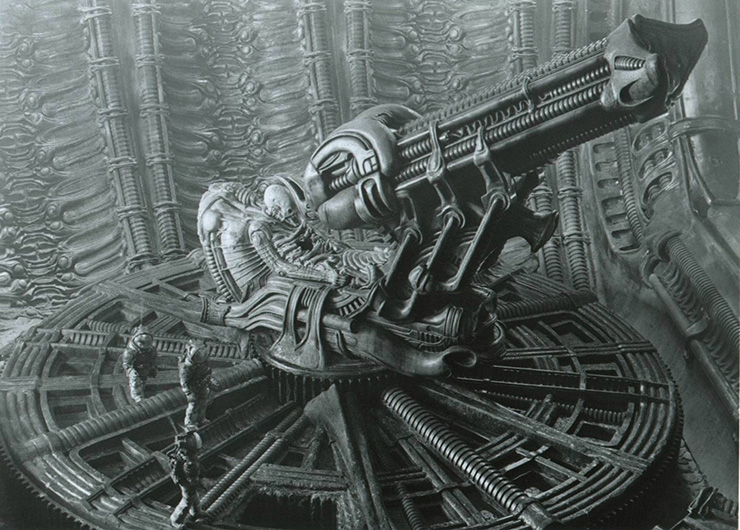
It’s difficult to imagine now how immediate and visceral an impact Alien had when it was first released in 1979 – and not just because of John Hurt’s infamous death by chestburster. While everyone recalls the bloody results of that grotesque incubation, the creature that hatched and evolved from that scene wasn’t the only element that made the film so memorable.
Alien is designed to instill a primal fear into an audience. It’s fundamentally a very simple tale impeccably told, with every single element of production and design working in perfect unison as the story builds inexorably from creeping disquiet to focused terror.
First, director Ridley Scott sets up a sense of mystery. The dramatic understatement of the crew reassures us that they’re just ordinary people doing their jobs. Then comes a landing on an inhospitable planetoid, the discovery of a forbidding derelict alien spaceship and, most importantly, the Space Jockey.
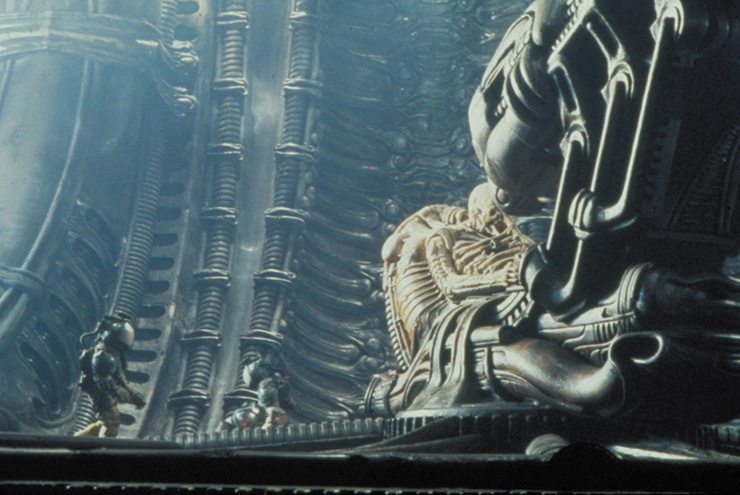
As a portent of things to come, the discovery of this creature is the moment that Alien tips the crew of the Nostromo from a bad day into a bad dream. The Space Jockey is a mute witness to events so ancient that it has fossilised since they occurred. Its presence hints at another whole, unknowable narrative prior to the events the audience is watching and, in that sense, it too is a character in this story. It is clearly a victim of some catastrophe that mortally injured it – from the inside.
As the first onscreen representative of H.R. Giger’s “biomechanical” lifeforms, the Space Jockey is deservedly iconic. The design of the adult Alien, the derelict and the Jockey fell to Giger after Scott had been impressed with the Swiss artist’s nightmarish imagination via book collections of his art. Described in the final screenplay as an “alien beast melted onto a throne,” the Jockey was originally dubbed the “Pilot.” No one can quite remember when it became the Space Jockey, or who coined the term, but the name stuck.
“From the script, I knew he was huge and had a hole in his chest, but that was all,” recalled Giger. He built a 1/25 scale maquette as a guide, then the on-set model was crafted from a wooden frame overlaid with plaster and piping. Giger then applied a sepia glaze over the Jockey which, when dry, was coated with a further layer of rubber latex to suggest a peeling, porous sense of decay.
Scott wanted 360-degree coverage so that the Jockey could be shot from various reverse angles. Rather than building the whole chamber in which the creature sat, art director Les Dilley employed an ingeniously simple sleight-of-hand that would require only one background “wall” to be built. The disc on which the Jockey sat could rotate, facilitating different shots in relation to the various players.
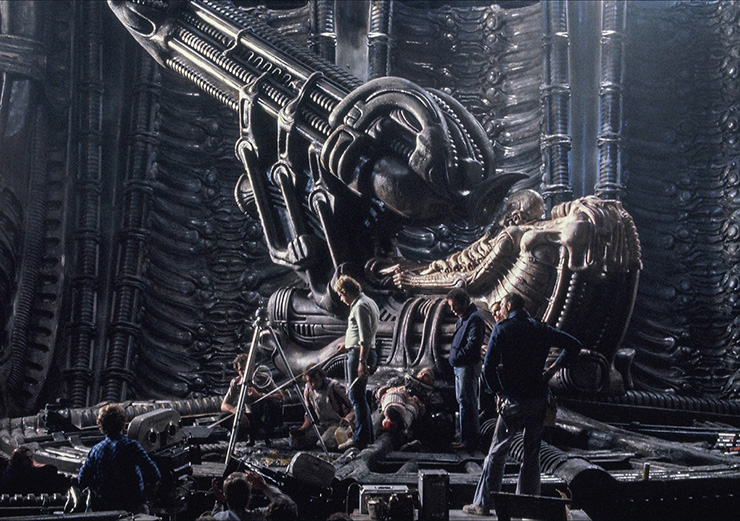
“We just had to remember the relative positions of the actors when we changed camera positions,“ said Dilley. “Otherwise, we would have had to build a complete set, which would have been about 400 feet in circumference.” The sequence was filmed with child actors wearing miniature copies of the astronaut costumes, which made the Jockey seem even larger. The final, onscreen impression was that the fossilised creature did indeed sit in a vast, funereal chamber, and the sense of scale discomfits the audience.
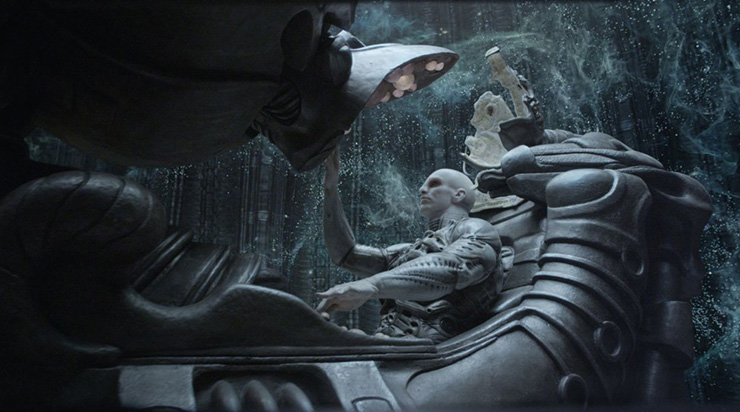
The Space Jockey occupies an important place in Alien lore and its mystery was exploited in Scott’s later prequel-cum-preamble to the original film, Prometheus. For this writer at least, it was disappointing to discover that the Space Jockey was, in fact, a space suit beneath whose sublimely elephantine features was a normal, albeit large, humanoid skull.
Some mysteries need deepening rather than explanation, and although Scott succeeded in expanding the mythology of the franchise, he diminished the enigma surrounding the Space Jockey and the derelict ship in a way that left no room for the audience’s own imagination – which was a large ingredient in the brilliance and appeal of the original film.
Of course, none of this lessens the macabre, operatic grandeur of Scott’s 1979 film, nor of Giger’s Space Jockey and his other, genuinely otherworldly designs. We will, after all, always have Alien.
A Different Interpretation
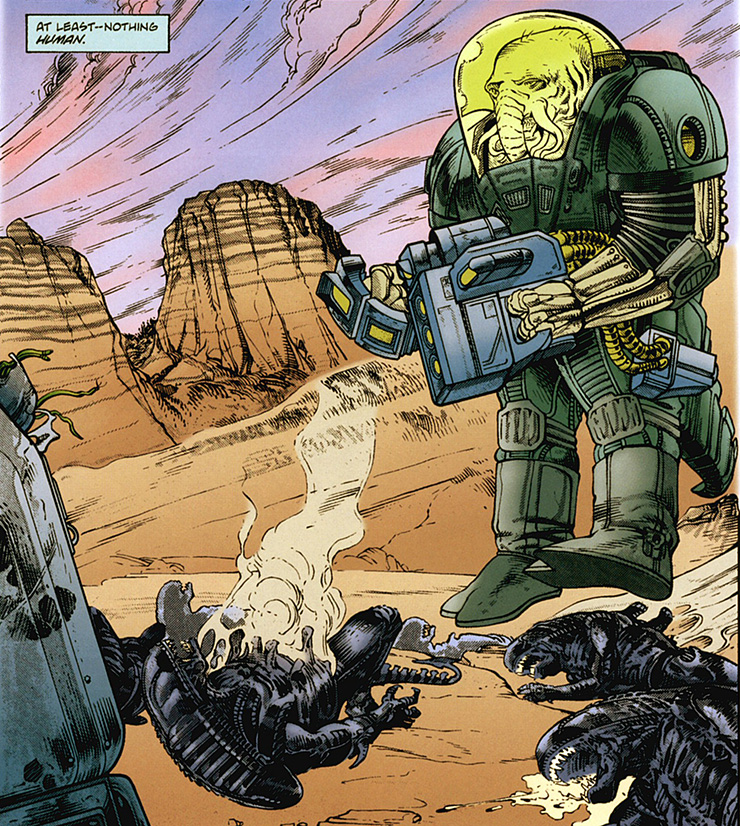
In the Dark Horse comic Aliens: Outbreak, which expanded upon the universe and situations shown in the movies Alien and Aliens, scribe Mark Verheiden (with artist Mark A. Nelson) eventually revealed the Jockey’s people to be inscrutable but highly advanced beings who enlist humanity’s help to defeat the xenomorphs.
They retained a sense of unfathomable mystery, their motivations not to help humanity per se but to rid the galaxy of the Alien scourge. If humanity and Earth got in the way, well that was just too bad.
